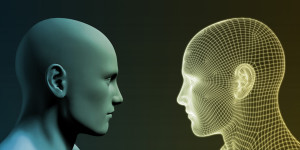Closing the gaps between people and machines

The airline industry is often held up as an exemplar for maritime to follow with its greater standardisation, tighter risk control and more efficient operations. And while shipping is moving towards more digital operations there remain as many differences as similarities.
Airlines are rightly wary of autonomy because their public profile means acceptance is much harder than for an industry often hidden from public view. What it shares with shipping are problems of fatigue, safety training and maintaining navigation skills.
Airline consultant Harry Nelson says that like shipping, airlines learn primarily from what goes wrong and the subsequent investigation but says “we’re running out of opportunities to do that. The light signals are where the interesting information is.” Fatigue is always present on some level but even airlines do not measure it well. Until there is a better methodology of measuring risk-based decisions, he thinks airlines will keep autonomy at arms’ length.
In practical terms pilots and officers of the watch have much in common. Flying an A380 from China to Europe, with waypoints across Mongolia 600 miles apart Nelson said that sitting still, looking at a line in the distance and not speaking made it very hard to stay awake. “I call young pilots ‘children of the magenta’ because they were born watching the horizon disappearing into the distance. That means you are only as good as the database that’s providing the information.”
Masters, watchkeepers and even insurers would surely sympathise.
Founder of Hempstead Maritime Training Christian Hempstead trains mariners on navigation software and hardware and expresses a similarly unorthodox position. To begin with he says, the focus on situational awareness is misleading. There are many kinds of awareness but there is too often a lack of understanding of what devices do.
“The autopilot may not clearly show you clearly when its next going to turn and sometimes it glides right past the waypoint just to surprise you. That’s the level of understanding we have to train watch officers for. It requires an understanding of the technology and the functioning of the GPS or whether the chart is showing the real water depth,” he says.
Unlike a pilot, Hempstead is walking around the bridge ‘dancing from one machine to the next’ dealing with too much light in the wheelhouse or adjusting screen displays. “The way the equipment is spread out in different places not conducive to cognitive ease, it’s a really difficult thing to master.”
President of Bluewater Crew Training Brian Luke trains both airline pilots and seafarers and says the attitude to training for technology and automation is overdue for change. He estimates about half of students buy into the process, the other half go through the motions. “As a result, we have had men and women operating ECDIS vessels for 20 years but when we bring them into the training centre we discover they have no idea how to operate the ECDIS. So how good is that tool at that point?”
Read the full article here.
